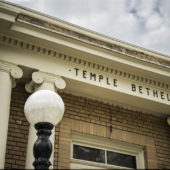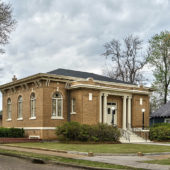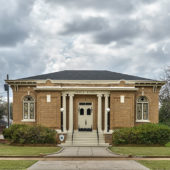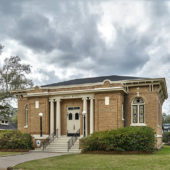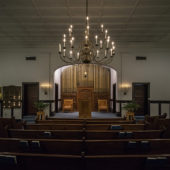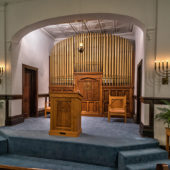An exquisitely preserved architectural gem that has continuously served this small Jewish community.
The first Jews to settle in Bainbridge arrived after the Civil War. They were soon joined by other Jewish immigrants, primarily from Germany, who were attracted by economic opportunity in the area. By 1878 there were approximately 53 Jews living in Bainbridge. Most of the men worked in retail and some were very prominent citizens. Ben Nussbaum, who owned a furniture store was elected to the Georgia State Legislature while Max Kwilecki owned a factory and served as an alderman. Sigmund Nussbaum founded Georgia’s first electric utility company.
Paul Kwilecki (1928 – 2009), a descendant of Max Kwilecki, was a fine self-taught photographer. Over four decades he documented life in his community, making hundreds of masterful and intimate black- and-white prints. According to the Duke University Center for Documentary Studies “Kwilecki ranks among the most important American documentary photographers of the twentieth century albeit “one of the least well known.”
In 1900 a Jewish religious school was established and two years later Temple Beth-El was formally founded. They met in private homes and the Elk’s Lodge until they raised enough money to build a synagogue. In 1914 the congregation bought a parcel of land and in 1916 they officially dedicated the synagogue which is still in use today. According to the local newspaper, people of all faiths filled the synagogue for the dedication ceremonies. The congregation grew and by the 1920s there were 24 children in the religious school. The Great Depression saw a decline in Bainbridge’s Jewish population. By 1937 the city’s Jewish population was only 37. Since that time Beth-El’s membership has usually fluctuated between 10 and 20 members.
From its inception the congregation was always Reform. Even though Beth-El never had a full-time rabbi, the importance of the rabbi to the congregation is illustrated by the synagogue’s rectangular floor plan with the bimah centered on a long wall providing unobstructed views from all parts of the sanctuary

